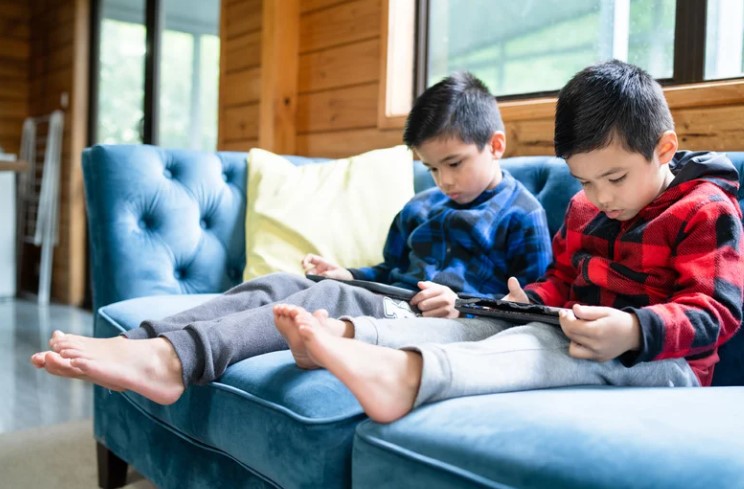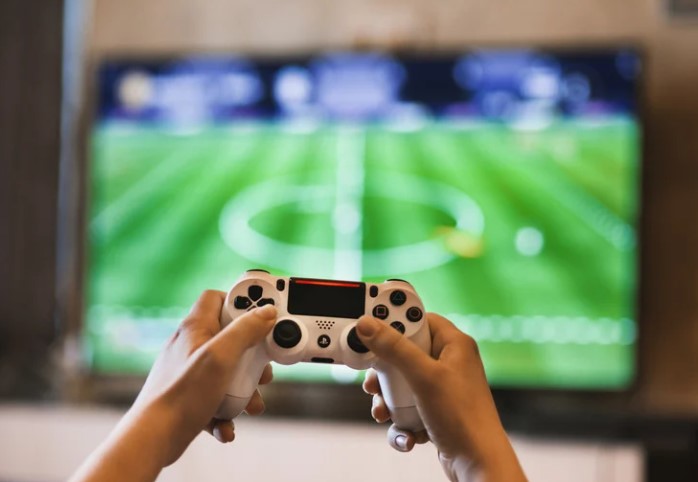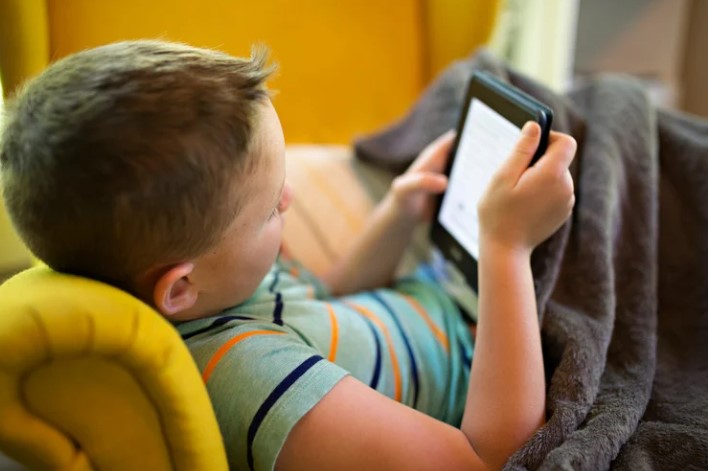The science behind screen time for Kiwi kids
A recent 2024 study published in the New Zealand Journal of Physiotherapy highlighted the risk of harm to the health and well-being of young people from the frequent and extended use of digital technologies.
While it made clear that more research on the topic is needed, the study, led by former AUT student and paediatric physiotherapist Julie Cullen, found that excessive screen use can lead to a number of health problems.

Some of the negative effects can include dry eye disease, nearsightedness, hearing loss, and some physical aches and pain. The study also found that the quality and type of content may have more impact than the duration of use. This is in the areas of health such as mental health, well-being and cognition.
“Digital technologies certainly offer opportunities for learning and other benefits,” Cullen says. “However, frequent and extended device use is associated with risk of harm to child and adolescent health and wellbeing.”
The study’s authors say that more research is needed to determine the long-term effects of excessive screen use on children and adolescents. However, they recommend that parents and caregivers take steps to limit their children’s screen time and encourage them to engage in other activities, such as playing outdoors, reading, or spending time with friends and family.
Defining “excessive” screen use is challenging, according to Cullen. However, the review indicates that most negative impacts occur with two to six hours of daily usage. While this range is broad, it highlights the need for healthier screen habits, especially considering the high rates of screen use among young New Zealanders.
What are the highlights of their research? Please note, the following information is excerpted from the University of Auckland’s online summary here and does not represent research conducted by Wireless Nation.

How much screen time do typical Kiwi kids have a week?
OECD data in 2018 showed that youth in Aotearoa used digital devices 42 hours per week on average, compared to 35 hours globally. And studies have shown that children’s screen use has increased since then.
That comes amid a background of increasing use of digital technologies for children and adolescents at home and school, with policies and guidance unable to keep up with the speed of change and adoption in many countries.
New Zealand students have high use of screens in class compared to global norms, with students in Aotearoa amongst the world’s highest users of digital devices in school, and with the highest use of internet in class in the world.
Most countries (including wealthy countries) use digital devices to learn in class once or twice per week.
Meanwhile frequent screen use for learning has been associated with reduced educational outcomes, both in New Zealand and abroad.

Does the type of content being consumed matter? Yes!
While some may argue quality is more important than quantity when it comes to screen use, this review found more nuanced results.
“Time spent using digital technologies appears to affect some areas of health, including dry eye disease, myopia, noise-induced hearing loss via headphone or earbud use and pain syndromes,” she says.
“For issues such as these, what kids are doing on the screen doesn’t make much difference. The impacts don’t really change based on whether a child is playing games, using social media or doing schoolwork.”
These risks have been established in several studies in recent years with increasing support for action to lower the risks linked to the increased use of technology. However, screen time wasn’t always the most important issue.
“Conversely, the quality and type of screen media may have more impact than duration of use, in areas of health such as mental health, wellbeing and cognition, depending on the age and developmental stage of the child.”
Why was this study important?
“The point of difference in this paper was the holistic overview of impacts, including vision, hearing, obesity, pain, sleep, cognition, mental health, and social impacts, as well as the inclusion of evidence-based advice on how to reduce risks,” Cullen says.
Understanding the impacts and what can be done about it is particularly important, considering rates of screen use for children and youth in New Zealand.
The United Nations Educational Scientific and Cultural Organization (UNESCO) released a report in late 2023, noting excessive screen exposure through school use can contribute to exacerbation of overall health risks.
It has called for discussion and decision-making to support children’s access to safer, fairer and effective use of technology. However, that’s not easy in the current environment, the article notes.
“The challenge is that frequent, extended use of digital technologies has become commonplace as screens are used for recreation, school, and work,” Cullen says. “We have set out a number of pragmatic recommendations, developed by subject experts, for clinicians, educators, and parents.”
What can parents do to help their kids have healthier online habits?
Recommendations include interventions to reduce risks such as taking eye breaks, blinking exercises, regular vision and hearing testing, advice on safer use of headphones and earbuds and ergonomic guidance.
“These can support our young people to access technologies and gain essential digital skills, while mitigating risk and encouraging safer screen behaviours in education and home settings,” Cullen concludes.
This blog post provides general information and should not be considered professional advice. Always exercise caution and supervise your children’s online activities.
Ready for Safer Internet at Home?
Family Fibre is more than just fast, reliable internet. It’s the internet plan built just for Kiwi families — complete with smart tools to help you:
✔ Set screen time limits
✔ Block harmful websites
✔ Control kids’ devices from your phone
✔ Protect against online threats
No tech skills needed. Just safer, healthier screen time for your whānau.
👉 Discover Family Fibre – the internet plan made for parents.
